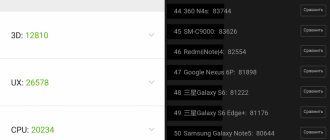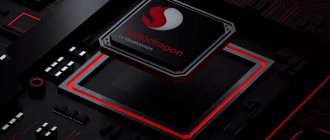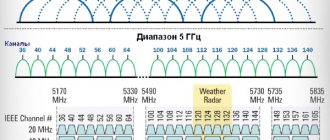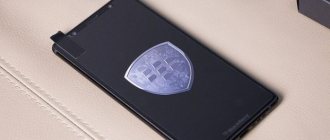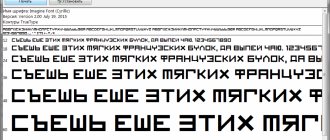A couple of years ago, one remarkable device appeared on the mobile device market, which immediately attracted regulars to store shelves. The gadget coped well with almost all the tasks assigned to it, and all control was based on gestures.
So, the subject of today’s review is the BlackBerry Z10 smartphone: characteristics, description, advantages and disadvantages of the model, as well as the opinions of experts along with reviews of ordinary users of the gadget.
What kind of fruit?
Z10 is, in fact, the same magic pill that allowed Canadians to return to the mobile device market with due chic and take their rightful place there. A little earlier, BlackBerry and its products were lost against the background of “Chinese”, “Koreans” and “Apple” gadgets. But after the release of the brand new BlackBerry Z10 STL100 with a unique operating system, the competition began in earnest. A very interesting device attracted the interest of many potential customers, turning them to the new BlackBerry brainchild from the already tired iPhones, Androids and Windows.
The BlackBerry Z10 smartphone is significantly different from previous lines released by the venerable brand. Many fans of high-quality mobile devices have taken a new look at the company’s products. Let's try to figure out more carefully what exactly the Z10 gadget from BlackBerry can hook the future owner of.
Design
The appearance of the new device can be confidently called beautiful. With its features, it is a little reminiscent of the fifth version of the iPhone, but only distantly - you won’t see the usual Home button here.
The gadget is made of matte and glossy plastic, and of very high quality. This is visible not only visually, but also felt to the touch. Holding the Z10 in your palm, you feel that you have a monolithic device in your hands without a shadow of defects or shortcomings.
There are no distinctive features on the candy bar itself. The model can be called correct from an ergonomic point of view. The device lies pleasantly in the hand, and there is absolutely no discomfort while working with it. The back of the gadget has a corrugated texture, so the smartphone does not slip out of your hands. In general, with its entire appearance, the device suggests that it is intended for a business audience: elegant, classically beautiful and strict, without any frills or other “fun” surroundings.
⇡#Camera
The camera module in the ZTE Z10 practically does not protrude above the body - for a 7.6 mm thick device this is very nice. Another thing is that there are no objective reasons for the protruding lens here - neither a stabilizer, nor the large physical dimensions of the matrix, requiring an increase in the optical unit. Apparently, the same module is used here as in the ZTE Blade V7: 13 megapixels, optics with a relative aperture of f/2.2, only the flash in this case has one LED, not two - this will negatively affect the complexion when Flash photography in the dark.
| ZTE Z10 Camera Interface | ||
I was pleasantly surprised by the interface of the camera application. Not everything in it is extremely logical and familiar - for example, the icon for switching to the front camera has an unusual and strange appearance and is placed in an atypical place. But it pleases with its speed - the application opens almost instantly and works very quickly, which is not what you expect from a not very powerful smartphone.
ZTE Z10 Camera Module
The camera itself is nothing special - this is exactly the level that you expect from a smartphone costing ten or twelve thousand in our time. Autofocus is contrast, it works quite quickly, but it regularly misses even in normal lighting when shooting portraits or macro. The large minimum focusing distance greatly limits the Z10's capabilities for close-up photography - you can photograph food with it, but not some insect. Color rendition is quite decent, without excessive accents. Detailing is weak even when shooting in natural light - the image is noticeably blurry. In the dark, noise reduction works very aggressively and completely destroys the sharpness of the picture.
ZTE Z10-gallery
View all images (15)
The Z10 can shoot video at resolutions up to 1920×1080 and frame rates up to 24 frames per second.
The front camera is ordinary - five megapixels, no autofocus, no flash. In normal lighting, you can get very decent self-portraits; in the dark, the selfie camera becomes more or less useless.
Interfaces
On the right side of BlackBerry (OS 10) there is a voice search button and a volume rocker conveniently located. By the way, in numerous reviews there is no, no, and even indignation regarding a not fully thought-out search. It's not even Google Voice or Siri, which is disappointing. The model is very picky about intonation and pronunciation in general, so voice search is clearly not the strong point of the BlackBerry Z10. I was very pleased with the characteristics of the rocker: accidental pressing somewhere in a trouser or jeans pocket is excluded, and during operation it is quite pliable.
On the left side of the device you can see two connectors – micro-HDMI (for connecting to a monitor) and micro-USB (for network charging and synchronization with a personal computer). The interfaces are quite densely placed, so using docking stations is not very comfortable on the BlackBerry Z10. The characteristics of previous models made it possible to easily work with peripherals due to special contacts on the case, but in the Z10, alas, such a moment is not provided.
At the top end, clearly in the center, there is a button to turn off the gadget; it wakes the smartphone from sleep mode. A little to the left is a 3.5 mm standard port for working with a headset and headphones.
On the back you can see a metal logo, and in the upper right corner there is an 8 MP camera and a flash. We'll talk about its capabilities below. At the bottom end of the gadget there is nothing except a small groove for removing the cover.
It is also worth noting that the model has an external battery for smartphones, that is, a removable type, which means it can be easily replaced in an emergency with a spare one. Under the cover there are slots for micro-SD cards, which are hot-swappable, as well as space for micro-SIM cards.
The gadget does not have any special or remarkable buttons. Everything is about the same as with other similar devices. However, the BlackBerry Z10 case characteristics have their own unique features that are not immediately visible. It's all about small magnets built into the design of the smartphone. They are responsible for putting the device into sleep mode. For all this to work properly, you need a proprietary BlackBerry Z10 case. The process is quite simple: you put the device in the case - the screen goes dark, take it out - it lights up welcomingly. The owners in their reviews have repeatedly praised this original feature. And you can immediately notice for fans of Apple products that Smart Cover for iPad is not the pioneer of such a feature, because BlackBerry became the pioneers of this principle.
⇡#Design, ergonomics and software
The ZTE Z10 doesn't try to follow the dress code that was once accepted only in the highest circles, but has now reached the entire smartphone community - the body materials are not described by a simple combination of the words "metal" and "glass". The edges and back panel are made of soft-touch plastic, painted in different (depending on modification) colors. But at the same time, glass is present (the front panel, of course) - and not simple, but, as is now customary, 2.5D - slightly curved towards the edges, which makes using the smartphone more convenient.
There are also inclusions of metal: a speaker grille above the display, a camera lens bezel, a thin border around the front panel, hardware keys and, unexpectedly, a small panel around the power button.
It is worth saying that the ZTE Z10 ultimately looks very interesting and one might even say purebred, which is a rarity for a budget smartphone. Of course, there is no hiding from associations with Apple – but in this case they are rather strained; There is no smell of copying here.
ZTE Z10, front panel: above the display – speaker grille, front camera and light sensor window
The Z10 is a pleasure to use - it's a thin and light gadget that fits easily into the palm of your hand, and it's easy to reach any point on the display with the same hand. Dimensions: 147.5 × 72.8 × 7.6 mm. Weight: 130 grams.
ZTE Z10, rear panel: top – camera lens and flash
The only slightly disappointing thing is the rather large black panel under the screen - it does not display any useful elements, such as touch keys for navigating the system. They are virtual and reduce the useful display area. And the panel is idle, it is there for symmetry.
ZTE Z10, left side: slot for SIM cards and/or memory card
ZTE Z10, right side: keys for volume control/camera release and power on
The keys and ports are located in places familiar to a modern Android smartphone: both power on and volume control are located under the thumb of the right hand; minijack on top; SIM card and memory card slot on the left; The interface for charging or connecting to a computer is from below, as is the speaker - it is built into the right grille, the left one, again, is present for symmetry, a familiar scenario for the ZTE Z10. The port, by the way, is microUSB, we are already starting to get used to it.
ZTE Z10, top edge: mini-jack (3.5 mm) for headphones/headsets and microphone
ZTE Z10, bottom edge: microUSB port and main speaker (hidden behind the grille on the right)
There's no fingerprint scanner either - in some respects it's a very old-fashioned smartphone.
| MiFavor shell | ||||
The operating system is, of course, Android 6.0 Marshmallow; nougat has not yet been implemented on a mass scale. Here it is slightly covered with the proprietary MiFavor shell, which does not show itself too noticeably. At least not as much as in the ZTE Axon 7. Yes, the icons of key applications are redrawn, some things are done in their own way (for example, the application bar is removed), but the system fonts are left alone, and the set of additional software is not too extensive. And from this list, only the slightly strange branded hub with games raises questions - it is clumsily designed and works slowly. Otherwise, the shell is very nimble and has interesting settings in its arsenal: from choosing the design of icons to the degree of blurring of the background image - the latter is especially pleasant and useful.
What’s not very nice is the Yandex search integrated into the smartphone. This, of course, is patriotic, but why it is needed on the lock screen when Google search is fully functional and built into Android is unclear.
Frame
The material of the case and the design itself as a whole must be given its due - everything is done very well, and without any complaints. Even despite the presence of such a feature as a movable back cover (the ability to connect an external battery for smartphones), the gadget does not creak, does not play, or crunch.
The device is sold in two colors – classic black and white. If you put in some effort, you can stumble upon a limited edition model in red, but this is very rare. As for the cost of the BlackBerry Z10 (price is about 14,000 rubles), the balance between price and return is, in principle, maintained.
Screen
The gadget's screen is built on a TFT matrix with a resolution of 1280 x 768 pixels and a diagonal of 4.2 inches. The characteristics, of course, are simple, but the picture is bright and of really high quality. Separately, it is worth mentioning the automatic brightness adjustment, since here it is done extremely intelligently: in a poorly lit room the screen does not dazzle the eye, and on a sunny day all data is clearly visible. The only negative that owners complain about in their reviews is that auto-adjustment cannot be turned off, although this point cannot be called critical.
Also, the BlackBerry Z10 screen has good viewing angles, even despite the TFT layout. No problems arise when viewed from above or from the side: colors are not inverted, contrast does not “dance.” Of course, the display could be better for such a strategically important and serious model as the Z10, but despite this, you can look through photos or watch videos in the company of one or two like-minded people without any problems.
Display
We repeat - the display diagonal is 4.2 inches - it is simply gigantic compared to the 9900. Of course, for this we had to sacrifice a qwerty keyboard, trackpad and control buttons. Apart from the side buttons, this is a fully touch-sensitive device, with the glass surface recessed somewhat inward, which contrasts with the completely smooth smartphones like the Galaxy S III or Lumia 920, and we've already become accustomed to the fact that our fingers glide smoothly along the glass all the way to the edge. They explained to us that this way the coating is more reliably protected, and since it is not Gorilla Glass, then, perhaps, it is for the better.
The resolution of 1024 x 768 is slightly superior to HD, the pixel density is 356 ppi - which makes the text very clear, and web surfing comfortable and enjoyable, as well as viewing photos. The panel boasts and not only this - its brightness is officially estimated at 800 nits, which is quite a lot for mobile phones - the sun's rays do not interfere with seeing the contents of the screen outdoors. Contrast and saturation leave a pleasant impression, as do horizontal viewing angles.
Camera
The BlackBerry Z10 gadget (firmware 10.3.1.2243) is equipped with a very good 8 MP camera, capable of shooting high-resolution video in Full HD format. There is also a high-quality LED flash for more accurate shooting. In general, the whole set is the same as in any other business-class smartphone, like the fifth series iPhone.
There is no special button to activate the camera, so all the main actions (shooting and focusing) occur through manipulations on the touch screen. It's disappointing that there are no settings either. The company promises to improve this point with subsequent firmware, because taking pictures without individual adjustments is a thing of the past, and such a photo will only be suitable for Instagram, but for now we hope and wait.
In principle, the camera in the BlackBerry Z10 LTE is not needed for this, especially in a device designed for the business segment. But in any case, you can click the girl you like on the street without any problems, but, alas, you won’t be able to take a highly artistic photo.
BlackBerry Z10 review
Good afternoon, Khabra residents. Another gadget was in my hands for a whole week. This is the BlackBerry Z10 – a new milestone in the history of the Canadian company, which, by the way, is no longer called RIM. Research in Motion is now BlackBerry. (Apparently, the cult of another fruit company known to us made us think about rebranding...)
I can't say that BlackBerry 10 is the story of another Android or iOS. It seems that lately operating systems do not want to copy iOS and Android and are trying to avoid similarities, while perverting with all their might.
But for me, it would be better if they stole, because I want to see logic in communicating with the device, and not a chair with two legs or, conversely, ten.
BlackBerry is exactly the fantasy of “masochist developers”, since the UI navigation in BlackBerry 10 is not clear to me and is not yet very pleasant. But all mobile operating systems have encountered this (with the exception of iOS 1.0, I think). But first things first.
BlackBerry Z10 specifications
Dimensions: 130 x 65.6 x 9 mm Networks: GSM 850/900/1800/1900 HSDPA 850/900/1900/2100 Display: TFT 4.2”, resolution 1280 x 768 pixels, 356 ppi Camera: 8 MP, autofocus , Full HD video 30 fps, LED flash. Front camera: 2 MP Memory: 16 GB built-in, support for microSD memory cards (up to 64 GB), RAM: 2 GB Processor: 2-core Qualcomm S4 MSM8960, 1.5 GHz Battery: 1800 mAh Talk time - up to 11 hours Standby time: up to 408 hours Music playback time: 60 hours, video: 10 hours
Design
I really liked the design, the Z10 is covered with glass on the front, and a pleasant rustling plastic on the back that resembles a soft touch. The phone looks very laconic, fashionable, and at the same time it still “smells” like a business product.
I have held both the white and black versions in my hands and I assure you, both look good. The design is the strongest point of the new product from BlackBerry. I’m currently using the iPhone 5 and I don’t really like that it’s too thin and light: the Z10 has everything perfect in my opinion.
And I especially want to say “thank you” to the developers that the white version on the front remains black. Still, from the experience of using the white iPhone 4, only deplorable memories emerge of how the front light frame does not contrast with the black screen.
OS
Note
: preliminary review of BlackBerry 10 on Habrahabr [link]
In the country, BlackBerry 10 OS is a rookie and is far from perfect. According to first impressions, 10 is a “finished” version of BlackBerry OS 7, since the spirit of the system is still hovering somewhere in the clouds: the same fonts are used here (the settings application is generally the same), the same graphics elements are used. It's a shame that BlackBerry didn't make a completely new OS. The company was afraid of losing the few clients it had, but in vain - sometimes you can win by putting everything on the line.
But, despite all the “crudeness” of the project, we can say with confidence that BlackBerry 10 is a very stable system, since it is built on QNX. [article about qnx]
A review of OS 10 needs a separate review, so I'll highlight the pros and cons:
Pros: – A single BlackBerry ID, which does not require the connection of BIS and BES (for BBM, for example) – The function of “sharing” the screen to another BlackBerry 10 device via the Internet – The ability to open the alarm clock from the lock screen – “Smart” keyboard – Camera with the Time function Shift – QNX's unbreakable core (in other words, stability)
Cons: – Extremely small number of apps in BlackBerry World – Lack of visual notifications – Ability to set only one alarm (in fact) – Lack of smoothness of the interface (with a Snapdragon S4 Plus processor!)
Battery
The Z10 has a removable Li-ion 1800 mAh battery. A BlackBerry is enough like any other modern Android device or iPhone. I took my BlackBerry off the charger around 10am and by 7pm it was dead. A familiar story.
LTE
The NoMobile blog said that the Z10 supports Russian LTE networks. I wasn’t able to check this because I can’t get 4G at home (this is just one time), and secondly, I use Beeline, and Megafon and MTS offer expensive tariffs and for the sake of one case I didn’t want to buy a SIM card. Khabra friends, if anyone has information regarding this, write in a personal message or in a comment, it would be interesting to find out and add information to the post.
General impressions
I really liked the design and individual functions. I didn't like the operating system: it needs improvement. BlackBerry needs to freshen up its GUI thinking even more to make it really good. And yet, the phone left a good impression, it’s like a big leap towards the future. I think (even if not on the Russian market) BlackBerry will succeed and in 3-4 years OS 10 will have good popularity, but not before that time...
General impressions #2 (for BlackBerry lovers)
Of course, people who use BlackBerry devices, who are already used to BIS and BES, who appreciate BBM, who like the corporate mindset, who, after all, know BlackBerry OS inside out... they will like the Z10, since it is a well-finished old BlackBerry. I've never had feelings for RIM, so I can't share the excitement with these people, but it seems to me that many people agree with me.
PS
The BlackBerry Z10 prototype, codenamed London, was, in my opinion, even prettier than the final product.
Performance
BlackBerry (OS 10) is equipped with TI OMAP 4470 processors supporting dual-core platforms at a clock frequency of 1.5 GHz. There is also 2 GB of RAM on board, which should be enough for almost everything.
The gadget thinks quite quickly, processes do not freeze or freeze, and no serious slowdowns were noticed, which is good news. The only benchmark that works more or less correctly with this platform is Geekbench. The result turned out to be very good - 1430 points. The indicator can be compared with the level of the same iPhone fifth series, Samsung Galaxy 3 and NTS One S.
BlackBerry Q10 Features and Specifications
The Q10 has a 3.1-inch screen, 720x720 pixels, with a density of 330 pixels per inch. For comparison, the Z10 screen is 4.2 inches, 1280x768 pixels, 335 pixels per inch, and the iPhone 5 is 4 inches, 1136x640 pixels, 326 pixels per inch. And while the Q10's screen clarity is on par with the best of devices, you'll be surprised by the small size due to the presence of a physical keyboard, especially when compared to Android's giant 5-inch screens.
However, compared to any previous BlackBerry device, the Q10's specs are stellar. Inside is a dual-core 1.5 GHz processor, 2 GB of RAM, 16 GB of internal memory. The main camera is 8 megapixel with autofocus (yes, no more EDOF) and a 2 megapixel front camera. LTE, Wi-Fi, GPS, Bluetooth, NFC - everything is available. Of course, the main ones are the 3.1-inch, 720x720 Super AMOLED screen and a physical full-fledged QWERTY keyboard.
For us, what stands out most among all of this is the size of the Q10's battery. With a capacity of 2100 mAh, this guy is clearly larger than what we've seen on BlackBerry to date. And when you find out that the Bold 9900 battery is only 1230 mAh, and the Z10 has 1800 mAh, you understand that you are in for excellent battery life for the Q10.
Autonomous operation
The model is equipped with a 1800 mAh lithium-ion battery. Such capacity is clearly not enough for a powerful processor and large screen. A more or less acceptable battery option for such characteristics is 2400 or 2200 mAh. Therefore, it is not entirely clear what the company’s engineers were guided by when assembling the gadget.
But, despite such a modest battery capacity, on a full charge the device can work for about 1-2 days, and in active mode. The manufacturer promises the owner about 17 days of standby time. It seems like a good thing, but no one uses our smartphones this way. In principle, the problem of device autonomy can easily be solved with the help of an external battery, which the NTS and iPhone do not have, so this point can be called critical with a big stretch.
Smartphone BlackBerry DTEK60
Characteristics of BlackBerry DTEK60
| Are common | |
| Type | smartphone |
| OS version | Android 6.0 |
| Frame | classical |
| Control | on-screen buttons |
| SIM card | nano SIM |
| Number of SIM cards | 1 |
| Weight | 165 g |
| Dimensions (WxHxD) | 75.4×153.9×7 mm |
| Screen | |
| Display | color AMOLED, touch |
| Touch screen type | multi-touch, capacitive |
| Diagonal | 5.5 inch |
| Image Size | 2560×1440 |
| Pixels per inch (PPI) | 534 |
| Automatic screen rotation | There is |
| Calls | |
| Light indication of events | There is |
| Multimedia capabilities | |
| Camera | 21 million pixels, LED flash (front and rear) |
| Camera functions | autofocus |
| Diaphragm | F/2 |
| Recording videos | There is |
| Max. video resolution | 3840×2160 |
| Max. video frame rate | 30fps |
| Geo Tagging | There is |
| Front-camera | yes, 8 million pixels. |
| Audio | MP3, AAC, WAV, FM radio |
| Connection | |
| Standard | GSM 900/1800/1900, 3G, 4G LTE, LTE-A |
| LTE bands support | FD-LTE: 2100, 1900, 1800, 2600, 900, 800, 700 MHz; TD-LTE: 2600, 2300, 2500 MHz |
| Interfaces | Wi-Fi 802.11ac, Wi-Fi Direct, Bluetooth 4.2, USB, NFC |
| Satellite navigation | GPS/GLONASS/BeiDou |
| A-GPS system | There is |
| Memory and processor | |
| CPU | Qualcomm Snapdragon 820 MSM8996 |
| Number of processor cores | 4 |
| Video processor | Adreno 530 |
| Built-in memory capacity | 32 GB |
| RAM capacity | 4 GB |
| Memory card slot | Yes, up to 2048 GB |
| Nutrition | |
| Battery | Li-Ion/non-removable |
| Battery capacity | 3000 mAh |
| Talk time | 26 h |
| Standby time | 336 h |
| Operating time while listening to music | 88 h |
| Charging connector | USB Type-C |
| Fast charging function | There is |
| Other features | |
| Speakerphone (built-in speaker) | There is |
| Control | voice dialing, voice control |
| Airplane mode | There is |
| Sensors | illumination, proximity, Hall, gyroscope, fingerprint reading |
| Flashlight | There is |
| USB-host | There is |
| Additional Information | |
| Announcement date | 2016-10-26 |
Advantages and problems of BlackBerry DTEK60
Advantages:
- great screen.
- excellent connection quality.
- easy.
- holds the battery well.
Flaws:
- slippery.
- The camera doesn't focus well in the dark.
Video review of BlackBerry DTEK60
iPhone 5
It all comes down to the popularity of the platform for developers. Naturally, there are many more applications for the iPhone on Apple resources, in contrast to BlackBerry. As for the technical component, the gadgets are on par.
The Z10 is built no worse than the same iPhone: a good built-in camera, an ergonomic body, a pretty nice look, and most importantly, a fast and intuitive interface. The cost of the most modest configuration of the iPhone, the fifth series, is comparable to the price of the Z10, so it’s a matter of taste and “worship” of one particular brand.
Samsung Galaxy S IV
The Galaxy S series is rightfully considered the leader of the Android fraternity. According to its technical data, it easily steps over the fifth iPhone and our Z10. But nevertheless, a number of controversial issues still exist.
One of these moments is the overly exaggerated screen, because of which the Galaxy not only looks much larger than the Z10, but also suffers from extremely unbalanced ergonomics - it is simply impossible to work with it with one hand. In addition, battery life has never been a strong point of Android devices. The Galaxy was no exception, literally devouring the battery in a matter of hours.
In terms of all kinds of software, Android is rapidly catching up with Apple, and is also noticeably ahead of the Z10. When it comes to working in a multitasking environment, BlackBerry comes to the fore by an enviable margin - the system works much better than Android and Apple combined. So, fans of high-quality and hassle-free multitasking are welcome to come to the counter with the Z10.
Summarizing
Judging by the reviews of experts in this field, the famous BlackBerry managed to revive and embellish its product line with a new flagship. Yes, the gadget lost the usual QWERTY keyboard, but it received a fairly smart and large screen, coupled with a completely new operating system. Some features of the new OS are somewhat similar to those of other competing platforms, and some are radically different.
In general, working with the BlackBerry Z10 (price: about 14,000 rubles) is a pleasure, both with the smartphone itself and with its operating system.
Perhaps BlackBerry does not have as well-developed an ecosystem as Android or iOS, and finding a familiar application is a problem. But such stagnation can be called temporary, since the OS is relatively new, so there is no need to expect a widespread variety of software. It seems that the situation will gradually improve, as was the case with mobile Windows.
If we talk about the quality of workmanship, the BlackBerry flagship is in no way inferior even to iPhones. The Z10 is already crowding out models from other vendors, and the only thing that limits the process of conquering the mobile market is the amount of software.

